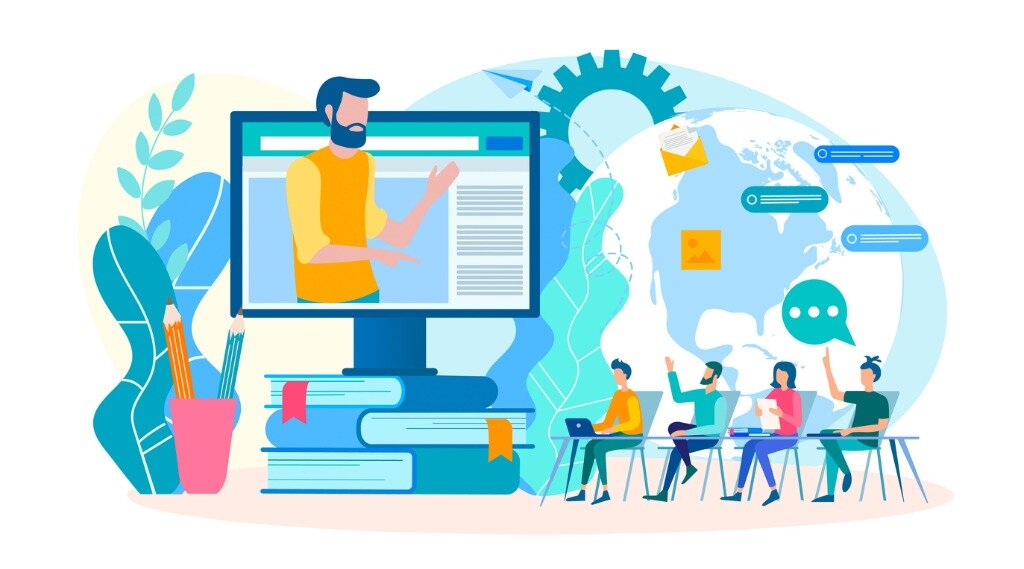Universities need to make big changes to keep up with the changes ahead, but there are small steps we can take now to prepare for the future.
Photo: Bigstock.
Universities, as the primary organs of higher education worldwide, have the constant need to renovate themselves to help students develop the competencies they need to succeed in the workforce.
For a long time, the changes made were simple updates of the curriculum, but 21st-century advancements like the Internet, of social networks, and other technological breakthroughs, demand more structural changes in higher education. Here are five ideas to promote change in universities:
1. Flexible educational programs
The profile of the student who dedicates his time exclusively to his academic training is obsolete. The current college student prioritizes the development of competencies for the labor market, with academic knowledge as a basis.
With a constantly changing labor market, a curriculum based solely on academic programs is bound to fail. Educational contents need to be directly fed from the trends in the labor market and balance it with the academic roots of which the programs are composed.
2. Micro-credentials and other new formats
“We need more multidisciplinary people. Whoever wants to do more needs knowledge from different fields, but cannot have five different bachelor degrees to know everything they need to know for a single project.”
Rosalía O’Donnell, director of Talentum Telefónica, explains for Cotec the need for a multidisciplinary profile that enables professionals to respond quickly to the needs of the job market.
New certification formats like micro credentials and MOOCs are crucial for the consolidation of a more complete and flexible professional profile. On-demand short courses with updated content can make the difference to keep workers relevant and competitive in their line of work.
3. Self-Learning
Going through college to obtain a bachelor degree is an enormous investment, a lot of people have started to question if it is even worth it these days. Especially, when we have self-made millionaires like Bill Gates and Mark Zuckerberg, college drop-out entrepreneurs that made use of their unique skills in the tech business without the need of a degree.
This kind of success cases makes the general public question if higher education is the only path to success, or if it’s infallible. Universities need to reflect, not only on the need to update their content, but also the methods they use to let the students access the knowledge. “Nowadays there’s practically nothing in the educational system that cannot be learned outside of it,” says Mariano Fernández Enguita, an Educational Sociology lecturer at the Universidad Complutense de Madrid. A loud argument about the rise of alternative educational content online.
However, it denotes a problem on the part of universities to adapt to the offer of educational contents that imply a minor investment of time and money to obtain similar results.
Self-directed courses and other educational products with a DIY approach, can reduce production costs of educational content, enable them to offer more affordable products for students looking for alternatives.
4. Professional diversity and training for teachers
More and more universities seek to recruit teachers that are closer to their work field. That’s how the figure of associate professor came to be and became a none spoken rule in many higher education institutions worldwide.
Associated professors are professionals with a 9 to 5 job, but that use some of their free time to teach as experts on a subject. This practice looks excellent on paper but has many areas of opportunity. Being an expert and a teacher are not precisely the same thing.
An expert can be excellent at its job, but to translate that experience into the classroom, needs extra effort and training. Educational institutions need to work on two fronts. First, expanding the types of professionals that integrate into the teaching staff so the educational programs can be more varied. Second, provide those professionals with the proper training to offer students an excellent teaching-learning process.
5. University-Industry collaborations
The primary purpose of universities today is to prepare students and integrate them into the workforce; considering this, the disconnection between colleges and the industry is worrying.
The most common links between them are job databases and work fares. There are no programs that, by evaluating offer and demand variables in the different work fields, really improve graduates hire rates.
There’s no joint effort to anticipate changes in the job market to keep universities updated and ready for the future of work. A collaboration that produces this synergy would bring a lot of benefits for higher education institutions that produce graduates and for the companies that employ them.
The higher education model not only needs to be updated; it is essential that they do so at the pace marked by advances in the workplace. Such a transition is a complex task and can take time, but considering ideas such as those proposed here can lead them in the right direction.
This article from Observatory of the Institute for the Future of Education may be shared under the terms of the license CC BY-NC-SA 4.0 
)
)











)
Sofía García-Bullé
Sofía García-Bullé
Sofía García-Bullé